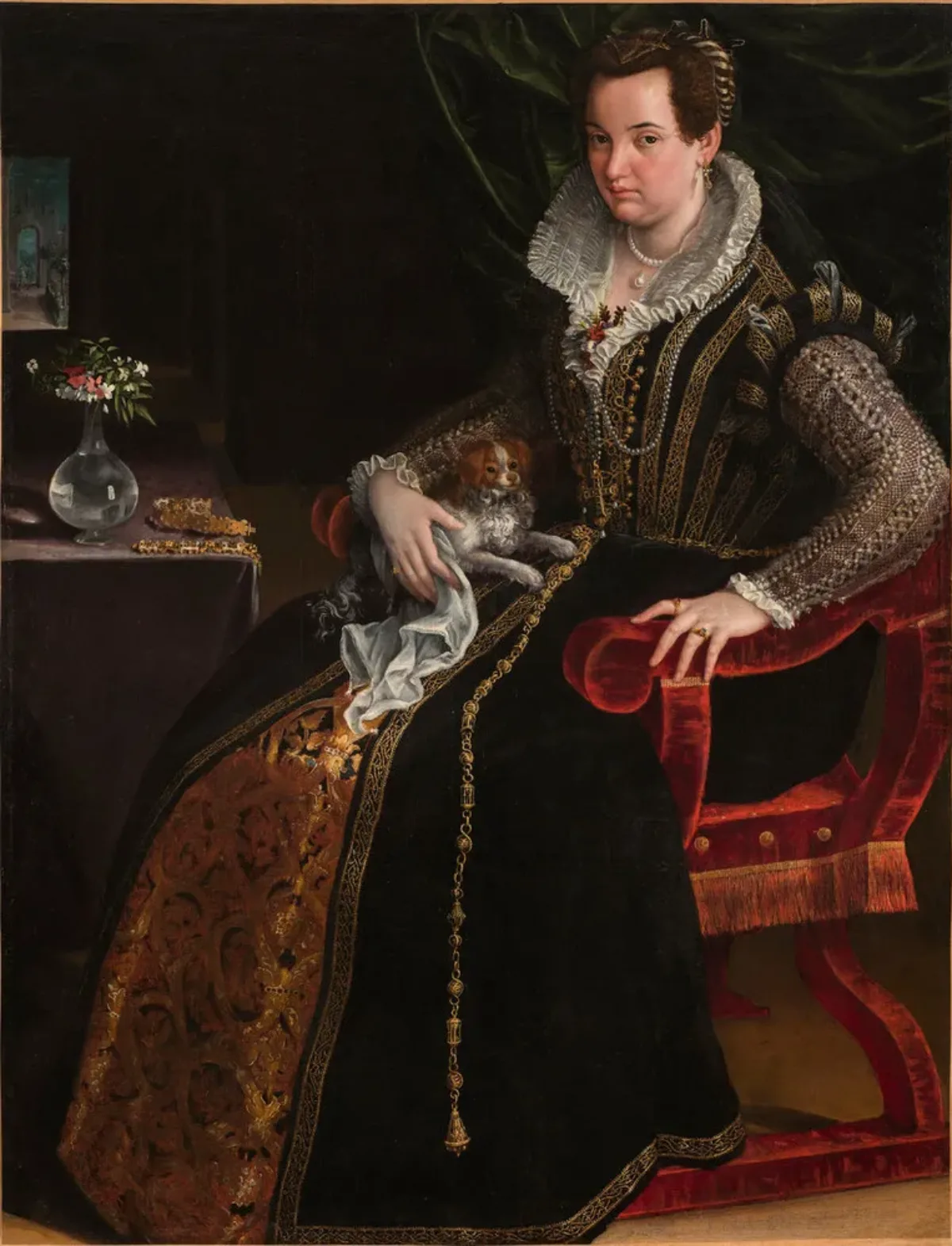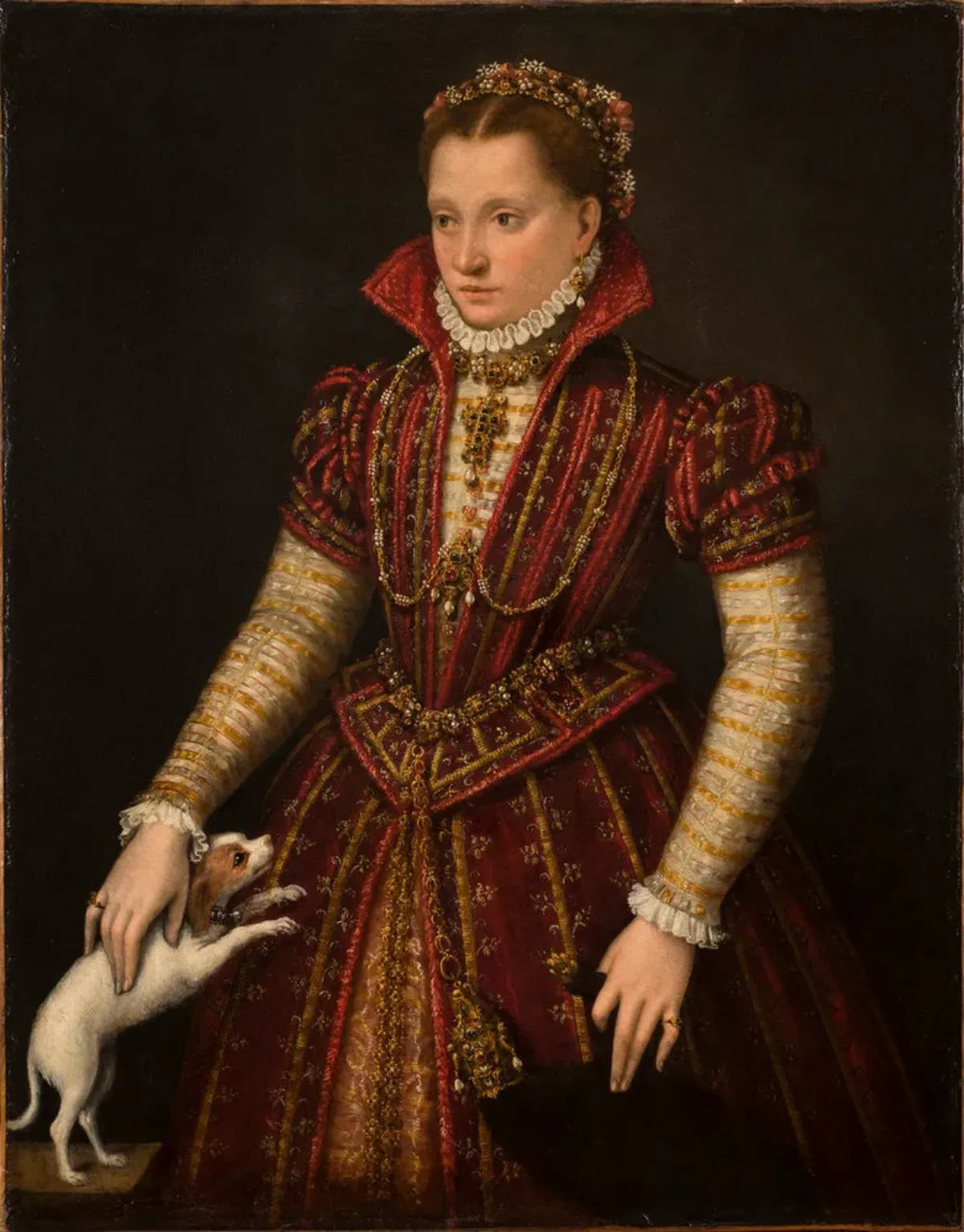Lavinia Fontana

Lavinia Fontana, Self-portrait at the Clavichord with a Servant, 1577, Accademia Nazionale di San Luca, Rome
She made great strides in the field of portraiture, which garnered her fame within and beyond Italy. In fact, Fontana is regarded as the first woman artist, working within the same sphere as her male counterparts, outside a court or convent.
At age 25, Fontana married a fellow painter from a noble family, who acted as his wife’s assistant and managed their growing household (the couple had 11 children, only three of whom outlived their mother). For 20 years beginning in the 1580s, Fontana was the portraitist of choice among Bolognese noblewomen. She also painted likenesses of important individuals connected with the University of Bologna.
Fontana’s fame spread to Rome, where she moved in 1604. There she became a portraitist at the court of Pope Paul V and was the recipient of numerous honors, including a bronze portrait medallion cast in 1611 by sculptor and architect Felice Antonio Casoni.

